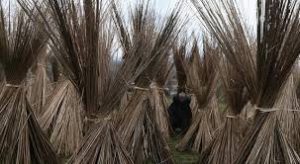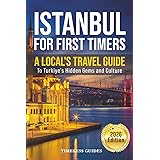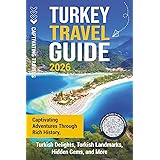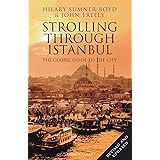HEMP IN TURKEY AND TURKISTAN – THE ORIGINS OF HEMP CULTURE
“… They spun wool, hemp, weaving cloth, weaving (?) and the other masters were also working their own works of art by themselves, and they were toiling and toiling…”
The Good and the Bad Prince Story, < 1000
“Prince Kalyanamkara and Papamkara” Uighur story
Source: Bahaettin Ögel,Introduction to the History of Turkish Culture, Volume 5, Clothing and Ornamentation in Turks, Ankara 1978, Ministry of Culture Publications.ss.
Hemp, which was cultivated for clothing starting from the Huns in Greater Asia, gained a strategic quality in Asia Minor, especially in the Black Sea region, together with the Ottomans, and became an indispensable part of the war economy. In the 19th century, hemp, whose production reached its peak due to the war with the West, became a prohibited product in the Republic of Turkey as a result of the pressures of the West towards the middle of the 20th century.
Hemp is also ourselves, a struggle to be ourselves. Both struggles are intertwined with each other. In the 19th century Mercantilism era, the Ottoman Industry, which was destroyed by the Baltalimanı Free Trade Agreement, paved the way for the British Fabric, and the agreements with the USA after the Second World War paved the way for the American Cloth and Trabzon Cloth entered the process of extinction together with the Rize cloth. The oil produced in the Ottoman lands and the imported products that were produced by seizing the cotton grown and entered into our country with local agencies were used as a lever, and when it came to the present, we entered the process of reckoning with ourselves.
The versatile dictionaries in our book, which was published by examining the archive documents from the past, which started to emerge in this process that started to accelerate at the beginning of the 21st century; It is also the unfailing testimony of our language.
Hemp inherited from Hun, Uighur and Ottoman ancestors is also the cornerstone of the process of being ourselves. The requirement of the heritage is to ensure that our primary culture of thousands of years is re-evaluated and further strengthened.
After Ögel, Nejat Diyarbekirli teacher referred to Ögel in his study titled Turkish Art History and Research and Studies in 1969 and accepted the Andronovo Culture period as 1700-1200 for Southern Siberia (Diyarbekirli, 1969:118). Then, İbrahim Kafesoğlu, in his work titled Turkish National Culture, which was first published in 1977, refers to the Russian archaeologists Çernikov and Kiselev, and talks about the Altay-Sayan region, where the mentioned cultural period has been dominant since 1700, and the spreading areas of these tribesmen (Kafesoğlu, 2007:54) . Finally, in 1978, in Emel Esin’s study titled History of Turkish Culture Before Islam and Introduction to Islam, M.He mentions that a European-Mongoloid mixed race type of Afhanesyevo and Andronovo Tribes came into existence between 2000-1200 BC and that they could be the ancestors of Turks (Esin, 1978: 3). The works of these four great Historians and Art Historians, who have done very important studies for pre-Islamic Turkish History and Art, have been the references of Turkish historians since these years.
In the main title of our review of hemp resources, the classification of “Turkey and Turkistan” has been proposed. Our cultural origins are shaped in a two-pronged region that presents a unity. We hope that the proposed classification will also be used as a basis for cultural, political, economic, strategic and geopolitical studies.
In the evaluation centered on the Turkestan dimension, while around twenty Turkish tribes were examined within the breadth of Greater Asia, the Far East, the Indian Continent, Russia and the Near East regions were also mentioned.
In the Turkey part, Europe is examined under the headings of Periods, Geographies, Techniques and Resources. It is our wish that a similar reversal point of view here should be re-evaluated, especially the cultural people of our country, centered on Asia Minor-Turkey.
At the end of the periods starting from Ancient Anatolia, the subject of hemp in the Republic of Turkey was also examined.
In the subject of techniques, the usage areas have been examined under seven sub-headings, starting from the nutrition techniques.
The richness of our language, dictionaries and archive records were examined in references, and once again we were left in awe. Among the nearly twenty dictionaries, the most striking ones are the placenames and our more than five hundred vocabulary that emerged from the archive (Ottoman and Republic) analysis.
It is a necessity for our words about hemp to be expressed and to create a broad agenda.
In the bibliography sub-title of the references, bibliographer Bülent Ağaoğlu meticulously unearthed the sources under eleven sub-titles, like an archaeological excavation.
By concluding our work with poetry, as always, we have endeavored to contribute to the culture artistically.
The study was concluded by creating a wide index based on Time, Ground (Places, countries, regions), Mind (People, Concepts, Terms).
The thesis and claim that emerged from our detailed and versatile source books review is the happiness of arriving at Ourselves, starting from Kendir. It should be a primary duty to hold on tightly to what belongs to us and to weed out what is not.
Hemp, which was cultivated for clothing starting from the Huns in Greater Asia, gained a strategic quality in Asia Minor, especially in the Black Sea region, together with the Ottomans, and became an indispensable part of the war economy. In the 19th century, hemp, whose production reached its peak due to the war with the West, became a prohibited product in the Republic of Turkey as a result of the pressures of the West towards the middle of the 20th century.
Hemp is also ourselves, a struggle to be ourselves. Both struggles are intertwined with each other. In the 19th century Mercantilism era, the Ottoman Industry, which was destroyed by the Baltalimanı Free Trade Agreement, paved the way for the British Fabric, and the agreements with the USA after the Second World War paved the way for the American Cloth and Trabzon Cloth entered the process of extinction together with the Rize cloth. The oil produced in the Ottoman lands and the imported products that were produced by seizing the cotton grown and entered into our country with local agencies were used as a lever, and when it came to the present, we entered the process of reckoning with ourselves.
The versatile dictionaries in our book, which was published by examining the archive documents from the past that started to emerge in this process that started to accelerate in the early 21st century; It is also the unfailing testimony of our language.
Inherited from Hun, Göktürk, Uyghur and Ottoman ancestors, hemp is the cornerstone of the process of being ourselves. The necessity of the heritage is to ensure that our thousands of years old culture is re-evaluated, strengthened and kept alive.





















